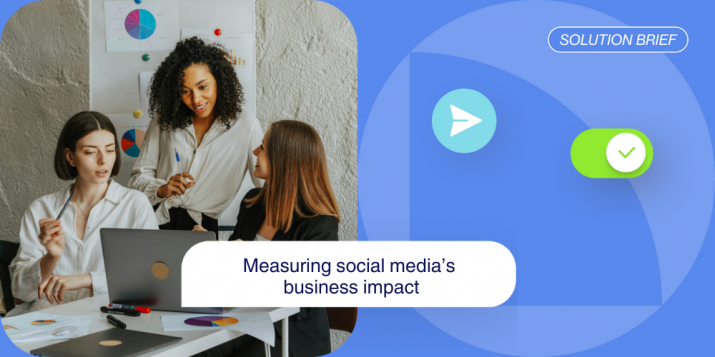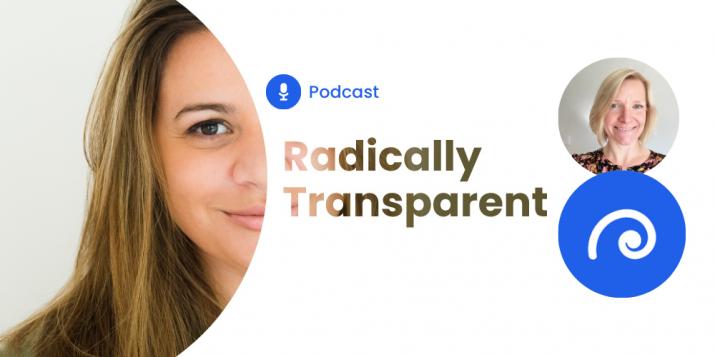
5 reasons why inbound marketing fails
Table of contents
B2B marketers always hope to increase efficiency. That often means gaining as many qualified leads and building as many productive customer relationships as possible at minimal cost. For several years now, inbound marketing has promised to accomplish just that.
Inbound marketing can be defined as marketing tactics that bring interested prospects towards your Web presence, instead of “outbound” tactics that require the B2B marketer to go out and make the first contact with leads. This can be achieved through any number of distributable media types, such as blog posts, whitepapers, social media marketing, or videos.
However, despite the popularity of the method, some companies criticize inbound marketing, saying that it has failed them. But a closer look at those companies’ marketing campaigns will usually reveal a few problems that caused inbound marketing to flop.
I’ve put together five reasons that will make your that inbound marketing fail for your company:
1. Bad content
B2B marketers create a lot of content. 70% of B2B marketers are creating more content in 2015 than they did one year ago. But that flurry of activity can leave a lot of room for error.
B2B content, no matter the volume, should be written to the highest quality standards. It needs to speak to the specific concerns of your target market. And each piece should be well-integrated into an overall strategy designed to bring leads into a trusting, nurtured relationship.
[Tweet “70% of B2B marketers are creating more content in 2015 than they were a year ago…is this quantity over quality?”]
One of the keys of successful inbound marketing is that it preselects an interested audience. For example, a person might first come across one of your informative data-driven articles or LinkedIn posts and then decide to open up the lines of communication by sending you an InMail message or signing up to receive a whitepaper.
But that first “hook” piece should be of the highest possible quality. You might have to spend money to hire professional writers or a content marketing agency to handle content creation. In addition, you need strong marketing management that can oversee a clear purpose for each piece of content and articulate how it fits into the overall brand message.
Don’t shy away from hiring the right people in order to get your inbound collateral in shape. By doing so, you’ll reap the rewards in terms of your marketing ROI.
2. Lack of targeting
As “easy” as even high-volume inbound marketing might seem, one piece of the puzzle is still critical: You still have to reach the right audience.
Without targeting, B2B companies often create content that seems relevant to their prospects’ industry but are not catching the eyes of interested point persons in a meaningful way. You don’t want your content to be seen only by middle managers when you’re really going for C-level. The way to resolve this dilemma is to precisely target your messages to your audience.
First, if your past market segmentation efforts have lacked detail, it’s a good idea to revisit the analysis to strengthen your overall strategy. Consider the business demographics and psychographics of your usual customers, which you can assess via market research surveys, forums and social listening in such places as LinkedIn and Facebook Groups and Google+ Communities.
Then, build a buyer persona that incorporates as many factors of the buying process as possible, and craft your content pieces to appeal to that “ideal” buyer. Such content might be a Tweet that links to a “best practices” webinar or a question on Google+ that provokes a discussion about industry dilemmas only you can solve.
In addition, look at what your competitors are doing. Not to steal from them, of course, but to take advantage of any “holes” in their marketing efforts. If you find that certain industry issues are not being addressed in enough detail—things that your target audience truly cares about—you’re equipped to create content accordingly.
Your audience will respond much more heartily, even in a B2B marketing context, when they come across content addressing their highly-specific concerns.
Recommended for further reading
3. No tracking
Without attention to metrics—and especially, the right metrics—you can’t tell how well any marketing method will succeed in the long run. This is especially true with inbound campaigns.
Outbound marketing seems to be easier to measure, because you have content pieces that you’re putting “out there” to do a certain job and bring in a measurable result. In a PPC campaign, you know how many impressions to expect and can track when, where and how they come in. By trying out some properly-targeted native ads on Facebook or LinkedIn, you can see what leads are interested in and make tiny changes that might result in big ROI enhancements.
But metrics yielded by the inbound marketing need to be assessed as well. Try defining certain KPIs that you expect your inbound tactics to have an impact on, such as:
- Significant engagement (3 or more comments on your social posts)
- Conversions (from unqualified to qualified leads, or leads to customers, as differentiated by social channel, blogs, etc.)
From there, track the performance of your content and see what prospects respond to the most. A high-quality social media management tool can show you, in particular, which social content is worth duplicating and expanding on.
4. Lack of integration between sales and marketing
Inbound marketing can bring in a ton of leads—leads that are qualified and primed to hear about your product and how it might benefit them. But without adequate lead nurturing, these prospects can fail to turn into customers.
There’s a huge discrepancy between perception and reality when it comes to the success of inbound marketing campaigns: sales teams often think they’re contacting leads within the best window of opportunity, but they’re not. Thus, a lot of potential revenue is left on the table, and many possibly-interested leads stagnate at the top of the sales funnel.
The way to correct this is to make sure there’s a coordinated effort between your sales and marketing teams in nurturing leads and moving them through the sales cycle. Your social media management tool can show you exactly when leads from social channels come in, providing rich information that can be passed on to sales for immediate lead engagement.
5. Not mixing inbound with outbound marketing
Inbound and outbound marketing are perfect complements of each other. Without the two working in tandem, you won’t be able to establish the foothold in your market that would otherwise be possible.
Inbound and outbound tactics support each other at every step. For example, a native ad on LinkedIn might link to a case study explaining how your product demolishes a common industry obstacle. That case study, in turn, might have links to corporate sales pages. Or, you might host or contribute to a networking event where your brochures are distributed. Outbound tactics make your presence known, and the content behind those tactics motivates leads to invest in professional relationships.
For smaller firms that have yet to establish a strong market presence, outbound marketing might be the go-to marketing game plan, with a view towards inbound tactics later on.
Highly-targeted outbound marketing can also garner fast results, which can then be used to inform your inbound marketing campaigns. Native ads and PPC campaigns can reveal the type of content that gets prospects’ attention. Use the best of such content on your blog and your social media presence to make your brand’s story known to more and more of your audience.
Inbound marketing works – if it’s used properly
Inbound marketing isn’t a failure in of itself—it offers a clear path to increased brand visibility, by encouraging leads to “come to you” on their own terms. But in order for it to work, it has to be used correctly. Throughout your campaigns, if you carefully avoid the pitfalls we reviewed, you’ll find inbound lead generation to be a straightforward—and successful—endeavor.




